OPUS APIS FLIES TO JAPAN
Special by THE NEW TIMES HOLLER!
The Land of Green Tea and Honey
Unless noted
Text, photos, and video by
© Amir Bey, 2012
May 4
|
OPUS APIS, Bee Oeuvre, is an project that I have been developing since bees became a source of inspiration in 2004.
|
FLIGHT OF THE HONEYBEE
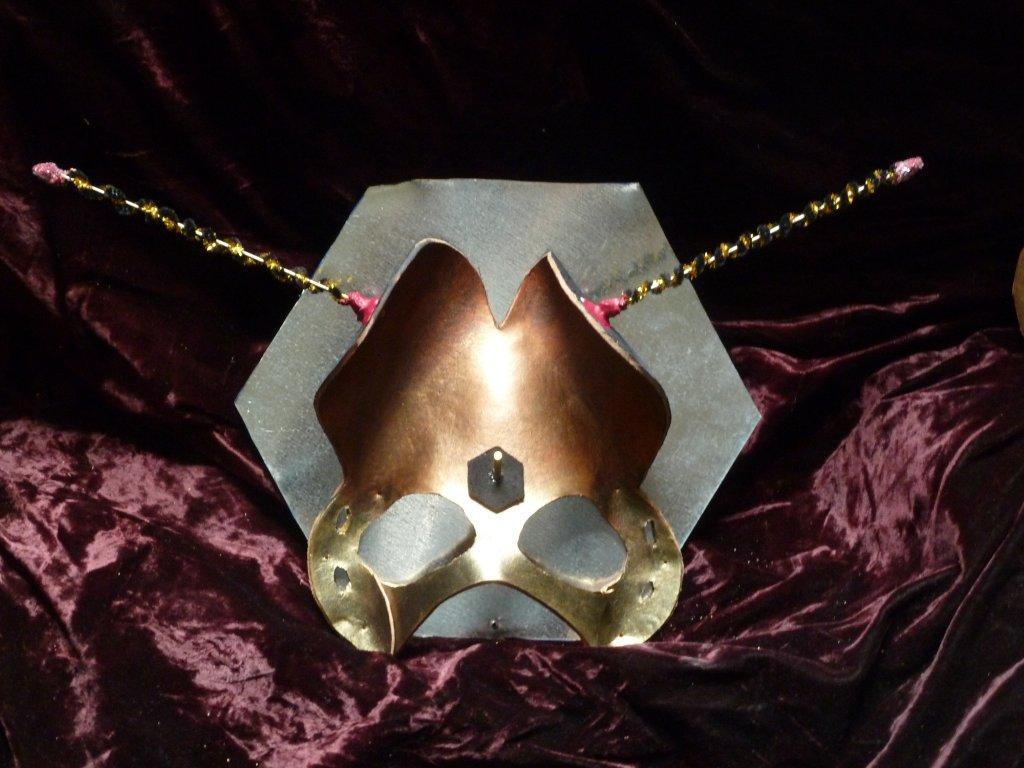
DRONE'S MASK Leather, acrylic, brass, Amir Bey, 2011
|
Recently I have been engaged in collaborative activities with violinist/composer Jason Kao Hwang and dancer/choreographer Maria Mitchell for Opus Apis. Costumes, masks, an installation, music, and dance sketches have been developing.
I discussed with
Koichiro Tokumochi, printmaker and sculptor, about the possibility of an exhibit in Japan. He had been planning the 10th anniversary of his Saurs [printmaking] Workshop, which was being held at
Gallery Sora, (Sky Gallery), a three-story beautiful space directed by Toshie Yasui, in his hometown, Tottori City. This would be our second collaboration,
our co-curatorship in 1995 for the Bronx River and Art Center being our first. Tottori is a remarkable city. Located on the coast of the powerful Japan Sea, it has the only sand dune
system in Japan, and it was the site of for the film Woman in the Dunes. With a population of just over 196,000, it covers a wide area. It is nestled among misty mountains (in April), rivers, streams, lakes, and many hot springs baths are there. Although not a large city,
it has many artists and cultural events.
|
JAPAN: NEW PERPSPECTIVES FOR A CHANGING LAND
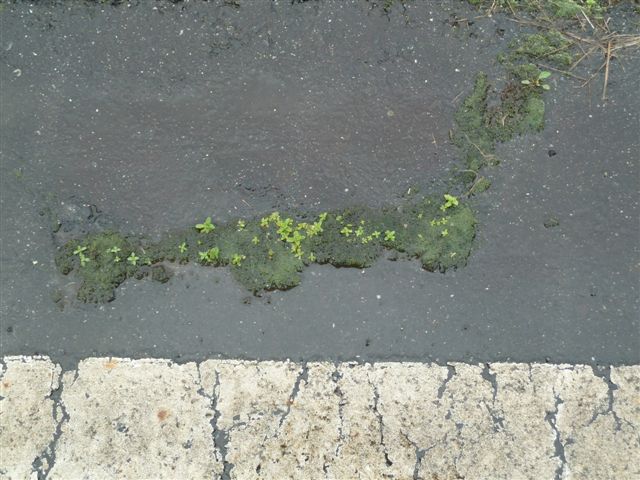
Concept: Saco Yasuma, photo, Amir Bey
|
|
I began my first days in Hanno, at the house of Saco Yasuma. Hanno is a town of almost 83,000, just outside of Tokyo. Until after the war, it produced some of the finest silk on the planet. Although some of its old downtown area has been redeveloped
with supermarkets, and other "modern" interuptions, it offers lower rents for its older spaces, making it attractive to artists.
|
HANNO
| |
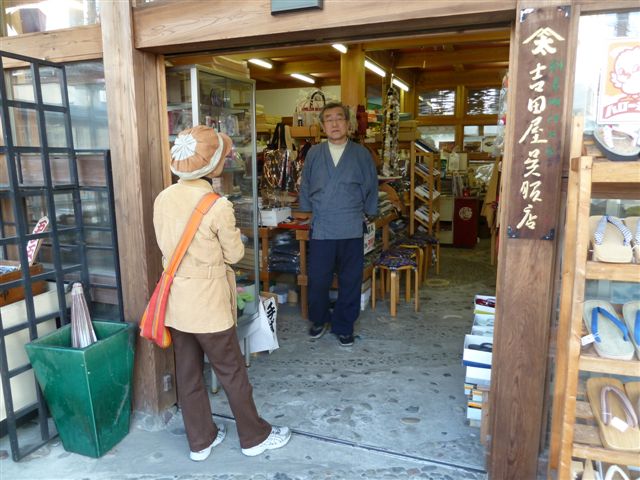
Saco Yasuma talks with Yukio Yoshida, proprietor of Yoshida-ya. The tiles on his floor is the work of Gunji Mikuni, a well-known artist.
|
|
|
|
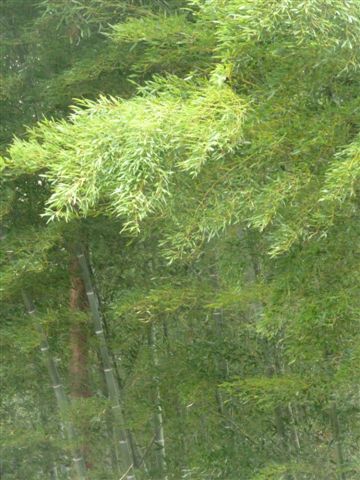
A stand of bamboo at Nohnin-ji Temple. There used to be larger and more bamboo stands and forests in urban areas, but they are now less of them.
|
|
A STONE LANTERN AT KANNON-JI TEMPLE
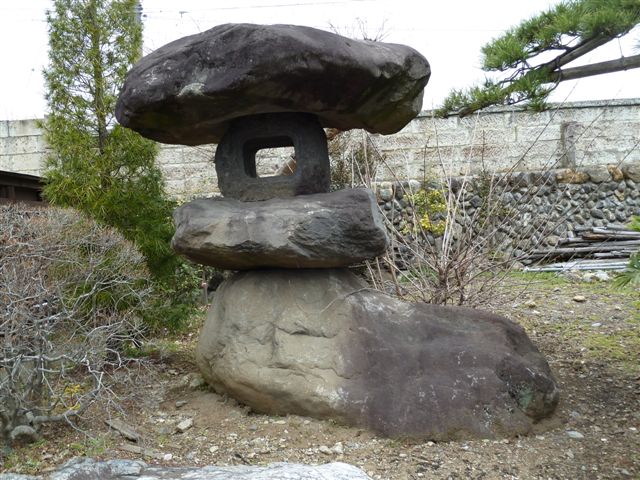
Compared to other stone lanterns, this lantern's minimal and primitive form is striking is striking.
|
|
SALARYMEN ON A TOKYO METRO
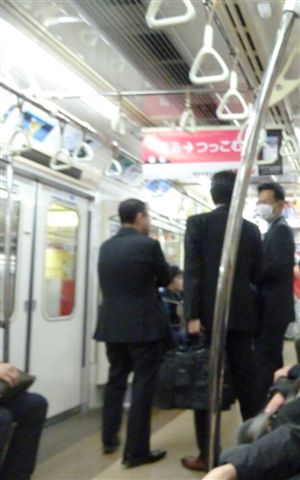
|
Some observations: Like a monotonous uniform, "Salarymen," businessmen, and male office-types almost all wear black suits and ties, carrying little briefcases. Models in ads for this atire are usually white males,
it's a wannabe thing! This made me search for and find antique tops that go over the male kimonos. There is so much dignity in the design of the jackets and quality of the silk.
After a few days I noticed that I hadn't seen any women who were visibly pregnant. After some discussion with friends, I came to the conclusion that the strains of the economy, the recent upheaval caused by the earthquake of 311
resulting in the tsunami and nuclear catastrophe made people forego having children. This changed once I got to Tottori, where I met and saw pregnant women. Tottori is further away from the affected areas.
Mind you, I wasn't looking for pregnant women.
It's just that here in New York you can't be outside for more than an hour without seeing an expectant mother. And I didn't see one obese individual anywhere in Japan. Likewise, in New York it won't take me long to see someone who's obese!
The whole time I was in Japan, I saw no rats. On New York's subway tracks you see them so much you could call the subways The Rat Zoo! Mayor Bloomberg would do better to take care of the rat problem in NYC than trying to
pass legislation restricting cigarette smoke in private homes.
|
|
TOTTORI CITY
TOKUMOCHI KOICHIRO SENSEI
Printmaker, sculptor, graphic designer, visual philanthropist
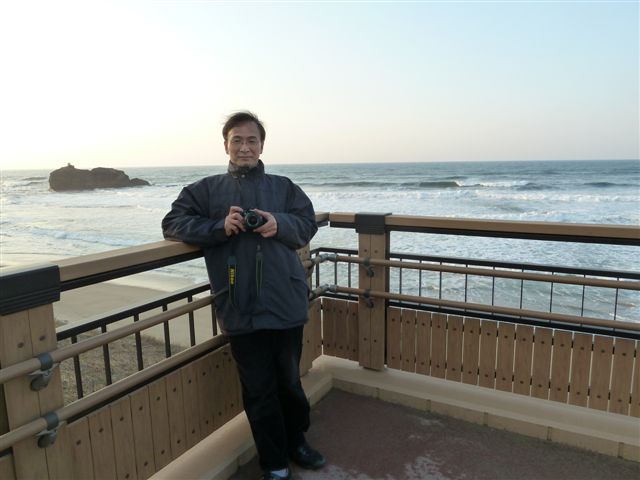
|
I first met Koichiro in New York City at Open House Gallery in 1989. Open House featured two artists from Japan weekly, and provided an opportunity to view varieties of young modern artists, as well as coming in contact with Japanese artists of all ages in New York and elsewhere.
Over the years Koichiro has flourished,
creating a substantial body of public art: welded steel sculptures, his imagery appears on the exterior and interior of city buses,
and commissions from private enterprises: his graphic designs appear on album covers and confectionary packaging to name some. I call him a "visual philanthropist" because he is very supportive of
other artists.
|
|
Galleries in Japan are very hospitable, often offering tea and pastry to visitors; this is in contrast to New York galleries, where a visitor sometimes won't receive a simple "Hello" nod.
TOSHIE YASUI, director of Gallery Sora
She's admiring one of Koichiro's wire bees!
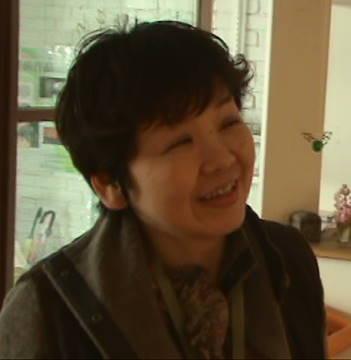
|
|
The cyber era makes intercontinental communication between artists easy. Before arriving in Japan I had only been in contact with Koichiro via Email. With Kumiko Fujishita, the dancer who was to perform "Birth of the Queen,"
one of the dances in OPUS APIS, I sent Emails and video about the installation and performance. And Jason Kao Hwang Emailed her an MP3 of his tune Transients, the music for the performance. When
I got to Tottori, Koichiro had made over 40 small wire "bees," which turned out to be a natural complement to my installation of mobile hexagons. After Kumiko saw the installation, she was able to apply her dance ideas with Jason's music. It all came
together!
|
|
KUMIKO FUJISHITA REHEARSING
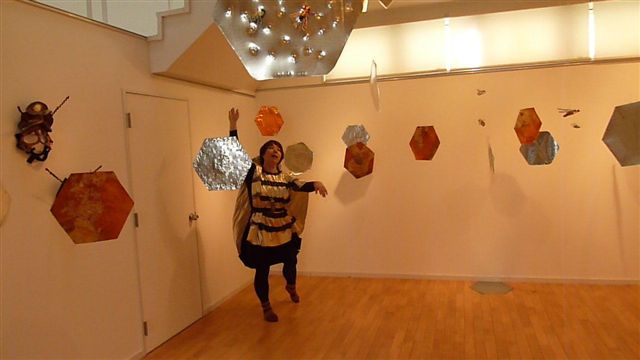
|
|
A MENTION IN THE NIHONKAI SHIMBUN
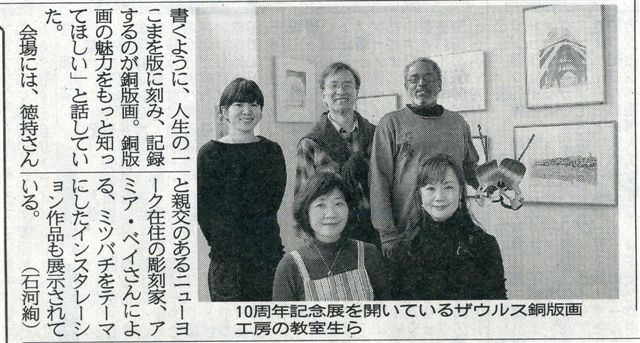
Seated: Kazuko Akiho, Etsuko Ota Standing: Sanae Sugimoto, Koichiro Tokumochi, Amir Bey (W. Drone Mask!)
|
|
Koichiro was very busy organizing for the 10th anniversary of Workshop Saurs and OPUS APIS. He had contacted the media, local newspapers, conducted radio interviews, and informed artists and people that he knew from nearby universities.
Earlier I came across a local Yohojo - bee apiary, run by the
Fukuta family. I told Koichiro about them and he went to their farm and told them about the upcoming OPUS APIS exhibition and invited them to
come for the reception.
Koichiro arranged for me to have an interpreter, Toronto-born Alex Ginnan, whose parents are Japanese, and he grew up bi-lingual. He is the Coordinator for International Relations at the
Tottori Prefectural Government. Folks told me his Japanese is impeccable, and his social fluidity
was happenin' too!
|
|
Alex with his mother
when she visited the gallery
ALEX GINNAN
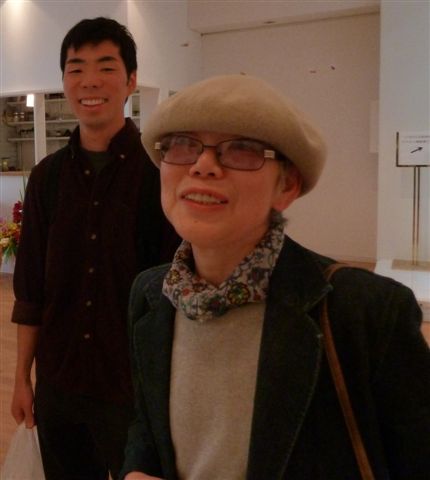
|
|
For sometime OPUS APIS was a concept that existed in my studio, in rehearsals and sketches. Now I was able to expand on the idea, and to actually see it!
And I made discoveries: the aluminum mobile hexagons had much more sound than the more colorful copper ones, and the fish wire was strong enough for Kumiko to spin,
hit, and freely play with the mobile hexagons without them falling. Before this I made an aluminum "Hexaphone" to play, which gave a saw-like sound. But the gong quality of the mobiles
was unexpected.
|
|
SOME IMAGES FROM THE SLIDE SHOW: CARRE-NNE (A Game) MOBILE HEXAGONS
| |
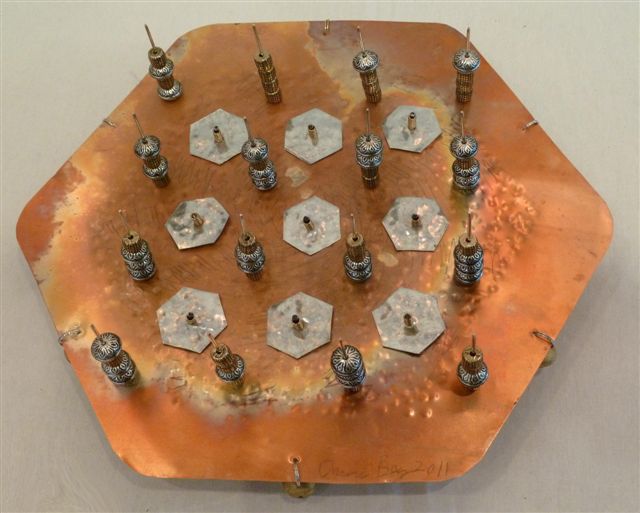 Carre-Nne (Game) Copper, aluminum, 14" wide, Amir Bey, 2012 Carre-Nne (Game) Copper, aluminum, 14" wide, Amir Bey, 2012
|
|
|
|
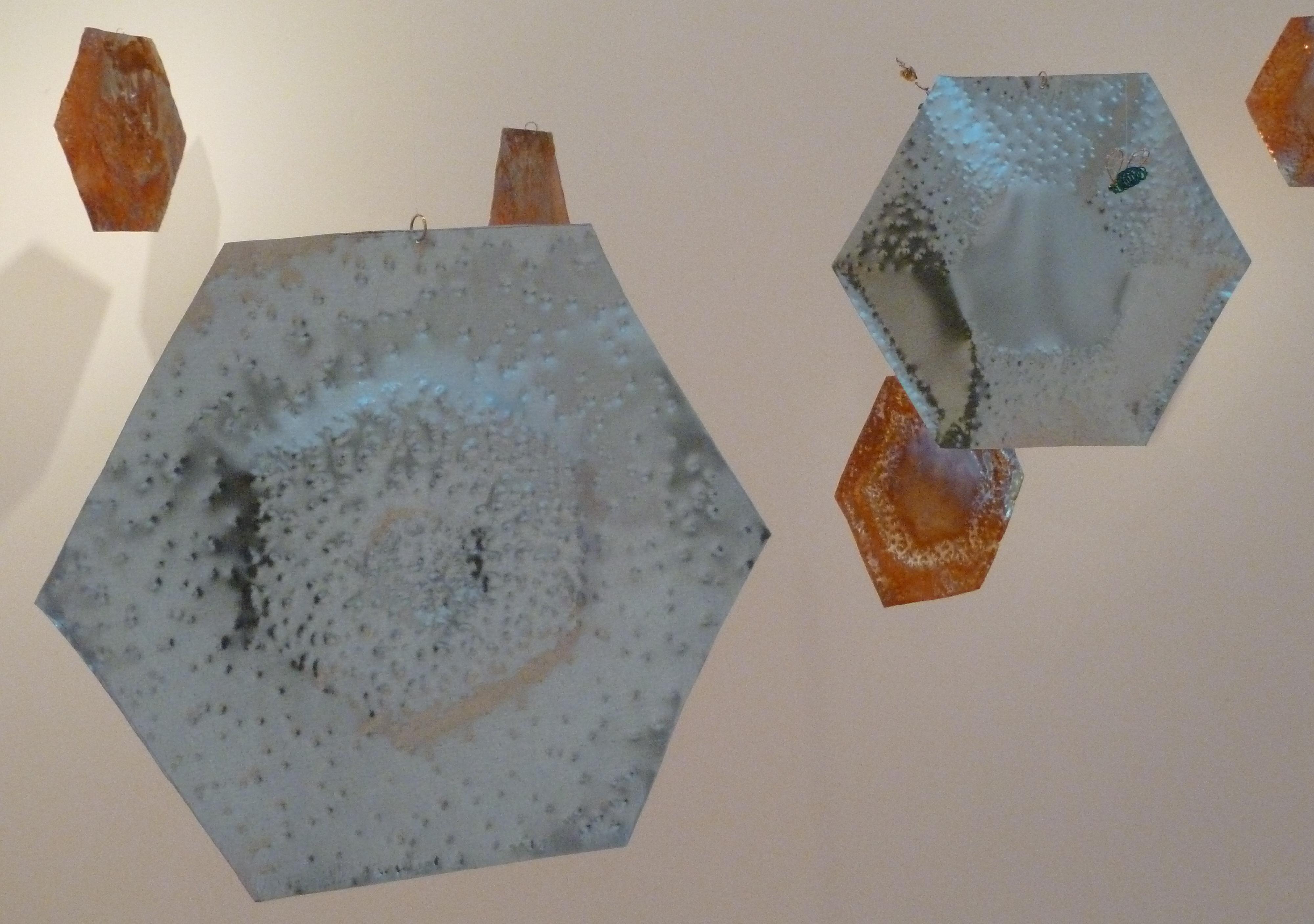
Aluminum, Copper, 14" wide, Amir Bey, 2012
|
Bee Coins, One-Hive Notes (also called Bee-Notes) and Bee-Money Broaches
BEE MONEY
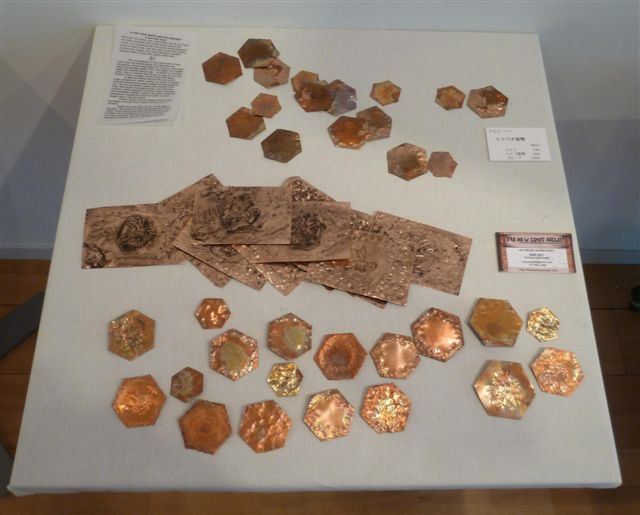
|
|
THE OPENING PARTY
In Japan, the opening reception/vernissage is called the "OPENING PARTY." And they mean that too! At OPUS APIS great food catered and from the home, sake, wine, and champagne, with an enthusiastic crowd of over 60
came by. Plus, the Fukuta family who runs the Yohojo (Bee Farm) were present, and Koichiro surprised me ("Surprises are my business!") by not telling me that the Fukutas had brought 1,000 bees with a queen in a plastic and wood
viewing case.
|
|
KIMONO-CLAD ETSUKO OTA MOVES WITH BLURRING SPEED
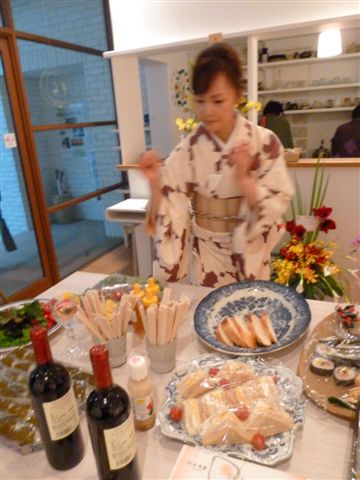
|
|
THE OPENING PARTY TABLE!
.JPG)
People swarming like bees around flowers
|
|
Amir Bey, Kumiko Fujishita
|
AFTER THE BIRTH
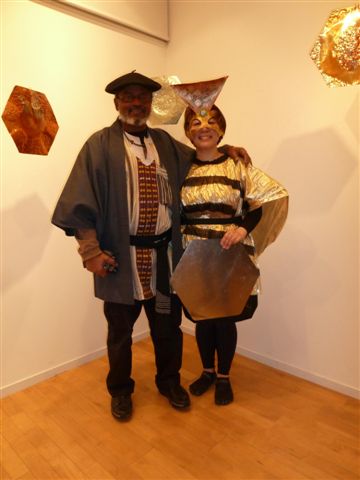
photo by Alex Ginnan
|
Shishi, a mythological lion that is part dragon. This is a traditional Tottori dance. Yeah, that's me tryin' to lay the voudou down!
|
SHISHI DANCE
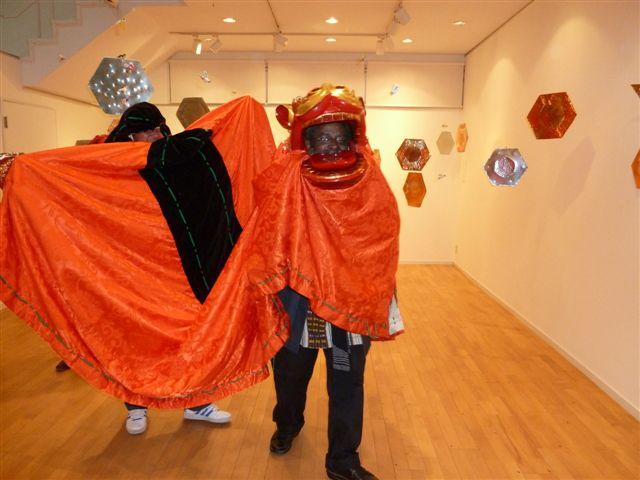
photo by Alex Ginnan
Koichiro told me how an early daimyo (lord) of the Ikeda clan used this dance to exert economic control by demanding funds to support its "festival." Now it is part of the cultural history of the area, with its image used in motifs, public benches, and many other ways. There is a red-faced monkey who drinks sake and leads the lion.
|
FUKUTA YOHOJO (Fukuta Apiary)
One important confirmation of OPUS APIS's mission was the contact made with the Fukuta family. By coming to the exhibition, the Fukutas unexpectedly received comments from customers they were not in touch with. The gallery had been selling their honey
in their gift shop, yet had not made that connection in relation to the exhibition until the evening of the opening party. And of course, I received so much from them! The surprise of the bees at the opening, and later, an invitation to
visit their farm. This gracious response from the family was totally unexpected! Mrs. Fukuta said they appreciated my love for the community of bees.
Before this I'd only visited hives in New York City, and not a full-fledged apiary. Koichiro, Saco, and I were lucky; the day they invited us over was rainy and the Fukutas were able to spend more time with us.
|
|
THE FUKUTA FAMILY
(Minus two girls who were in school)
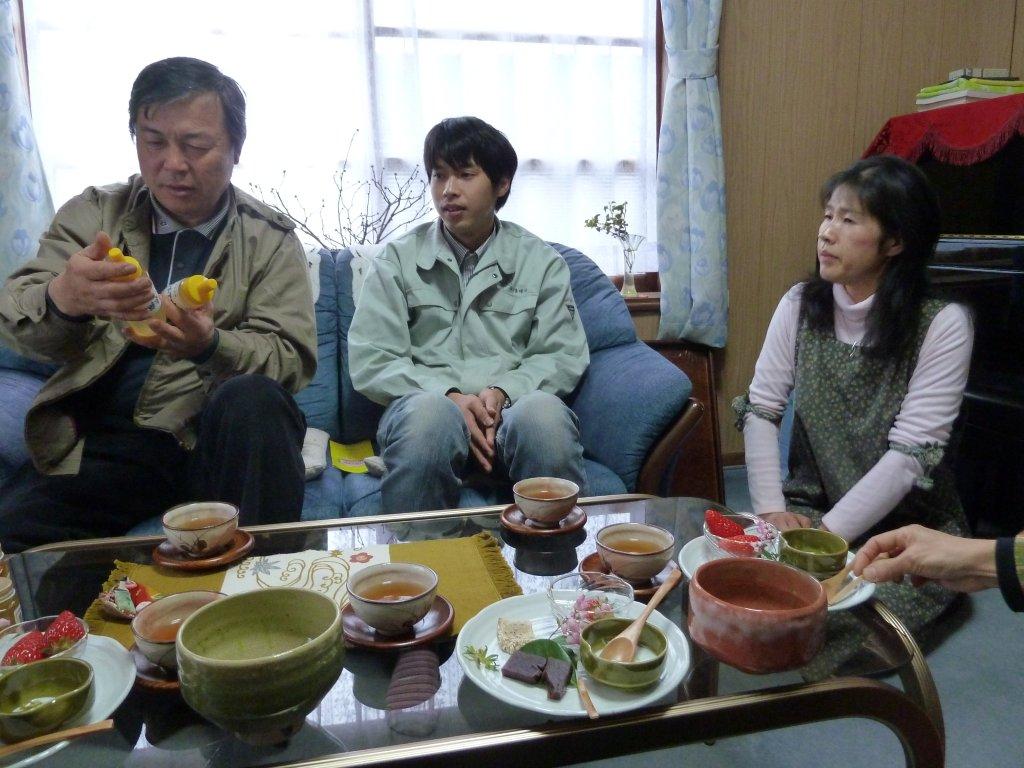
|
|
THE LAND OF GREEN TEA AND HONEY!
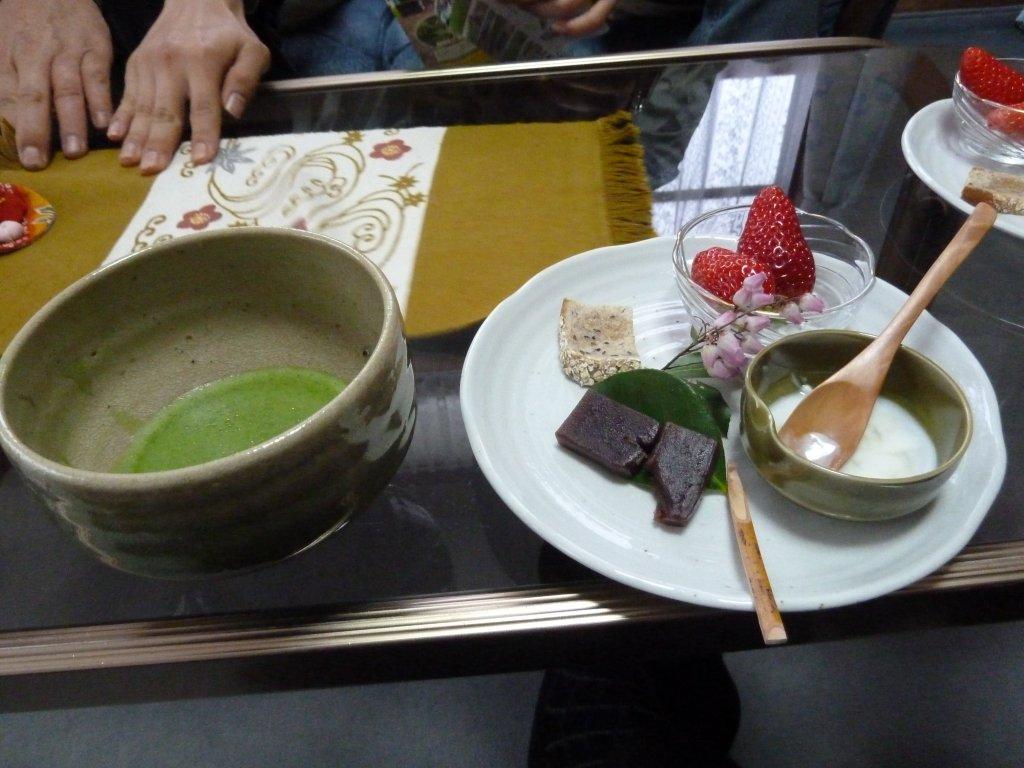
|
Mrs. Fukuta presented us with a tea ceremony. About this Saco said, "The name of the tea is called "Matcha" and is usually served with confections formed in
beautiful shapes of cakes made of bean paste, rice flour and other stuff, sometimes
related to each season or to express the season. Mrs. Fukuta made a nice plate of seasonalble fruits
and flowers with bean paste jello called "Yokan" and crackers with 'home made' [theirs!] honey. It was a beautiful arrangement!"
After we discussed workers, drones, and queens, Mr. Fukuta took us to visit some hives.
|
WE WERE GRANTED AN AUDIENCE WITH THE QUEEN!
| |
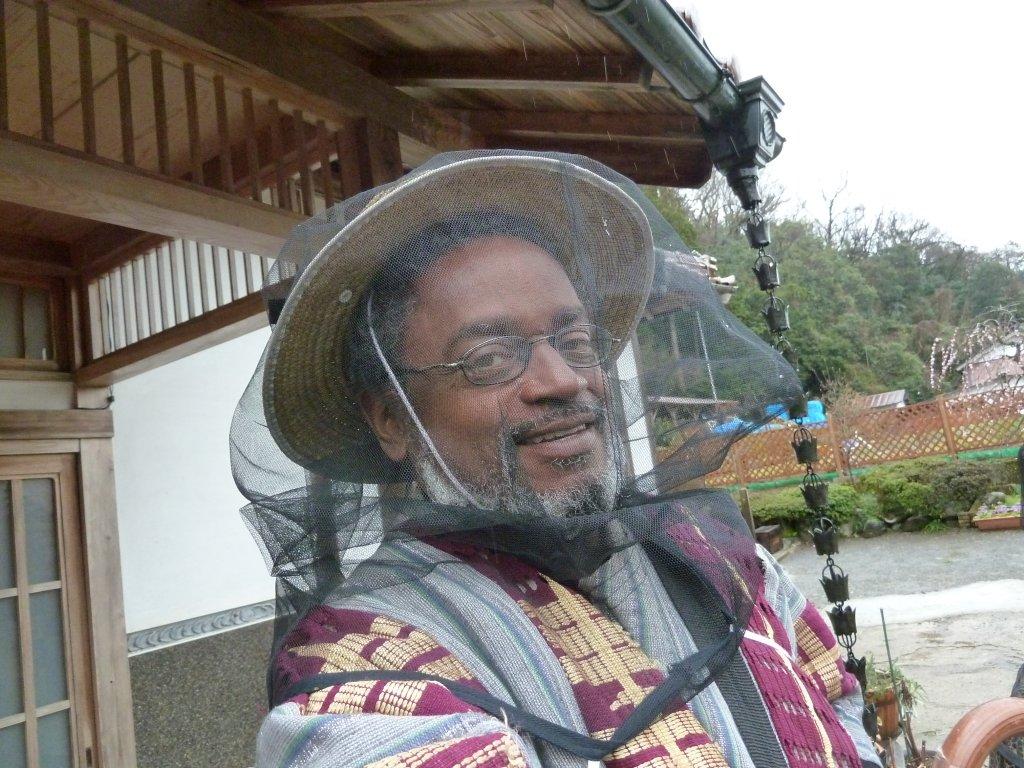
One must wear the appropriate attire
|
|
|
|
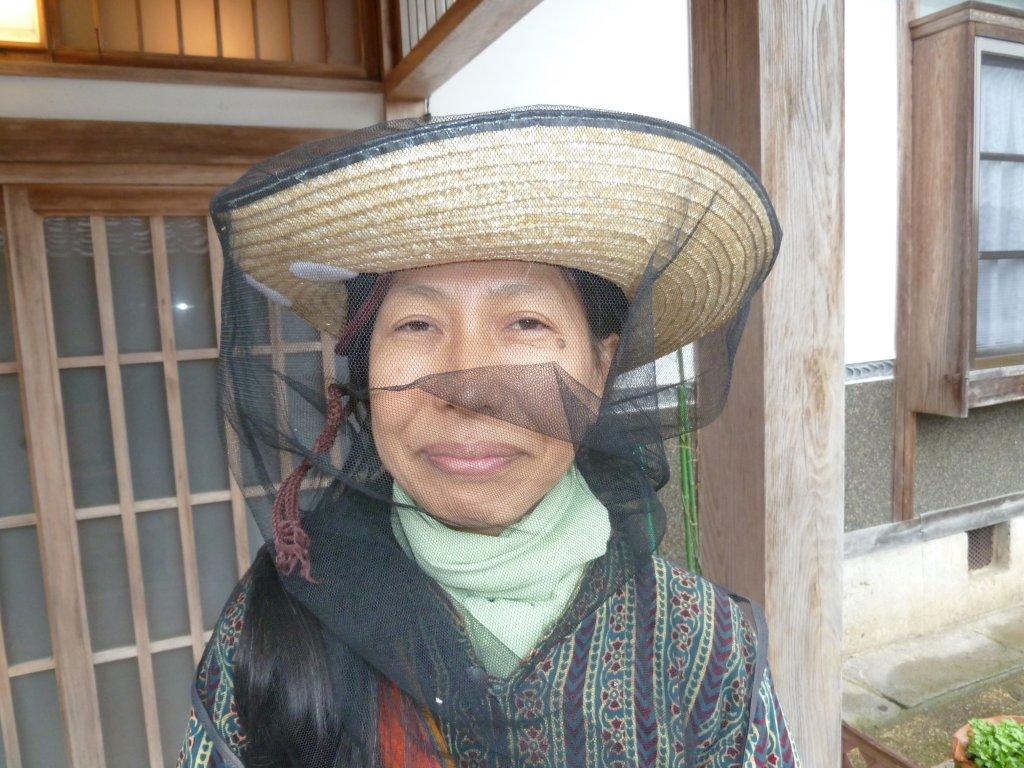
Saco in preparation for the audience
|
|
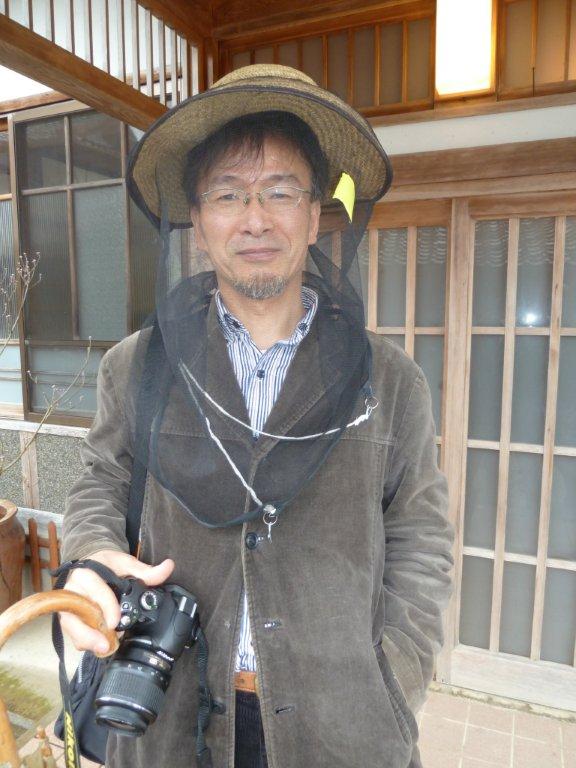
Koichiro in Studied Readiness
|
SOME SLIDE SHOWS AND VIDEOS:
|
|
| | | |